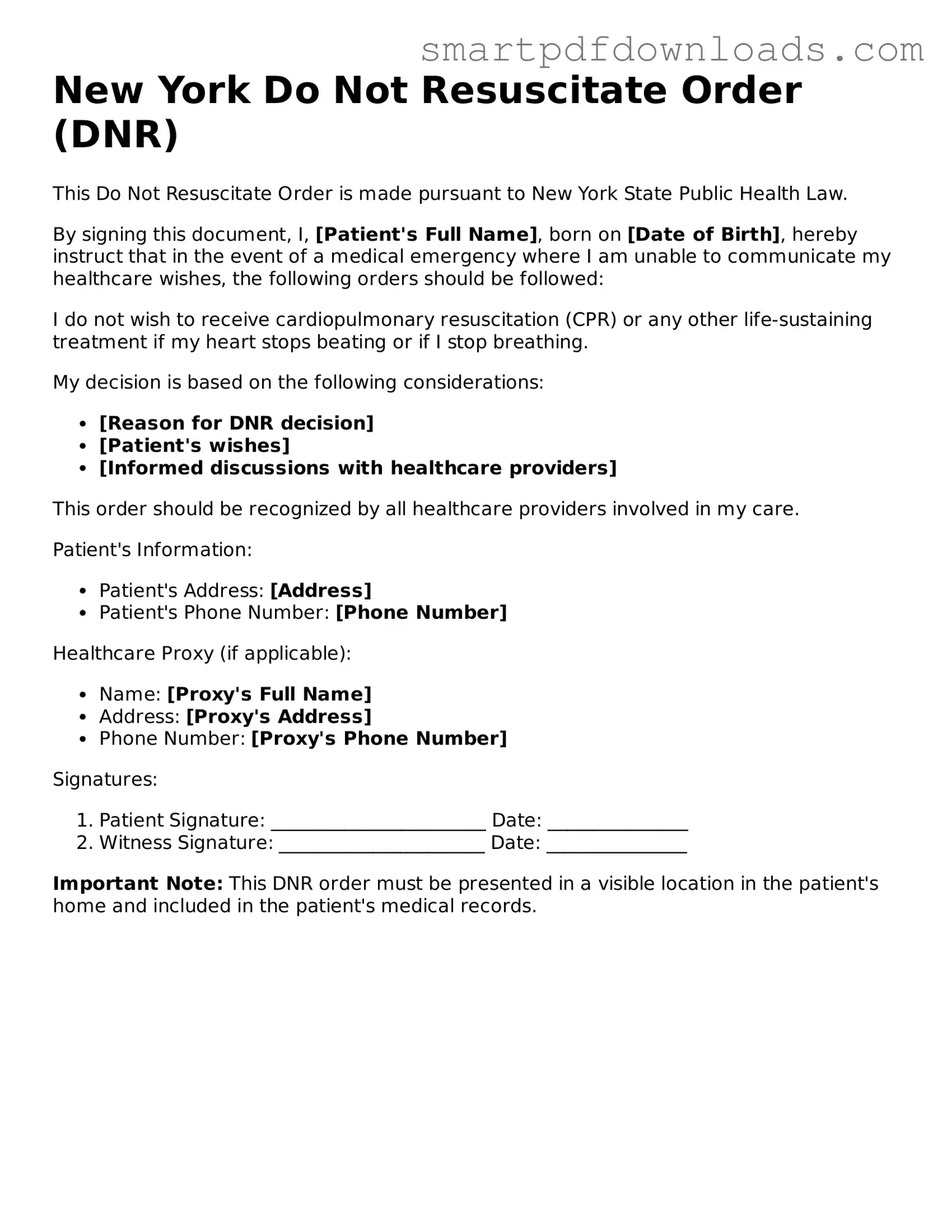New York Do Not Resuscitate Order (DNR)
This Do Not Resuscitate Order is made pursuant to New York State Public Health Law.
By signing this document, I, [Patient's Full Name], born on [Date of Birth], hereby instruct that in the event of a medical emergency where I am unable to communicate my healthcare wishes, the following orders should be followed:
I do not wish to receive cardiopulmonary resuscitation (CPR) or any other life-sustaining treatment if my heart stops beating or if I stop breathing.
My decision is based on the following considerations:
- [Reason for DNR decision]
- [Patient's wishes]
- [Informed discussions with healthcare providers]
This order should be recognized by all healthcare providers involved in my care.
Patient's Information:
- Patient's Address: [Address]
- Patient's Phone Number: [Phone Number]
Healthcare Proxy (if applicable):
- Name: [Proxy's Full Name]
- Address: [Proxy's Address]
- Phone Number: [Proxy's Phone Number]
Signatures:
- Patient Signature: _______________________ Date: _______________
- Witness Signature: ______________________ Date: _______________
Important Note: This DNR order must be presented in a visible location in the patient's home and included in the patient's medical records.
